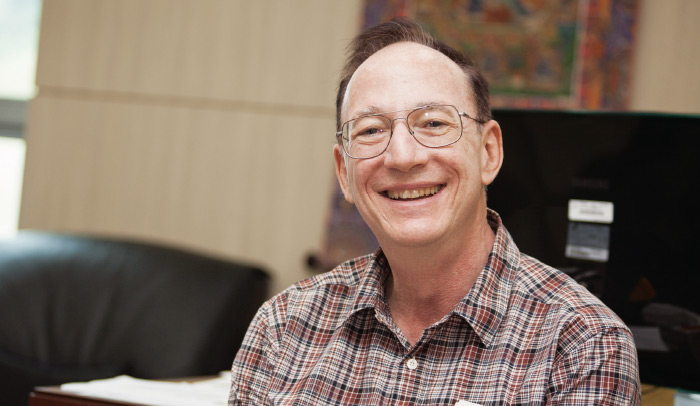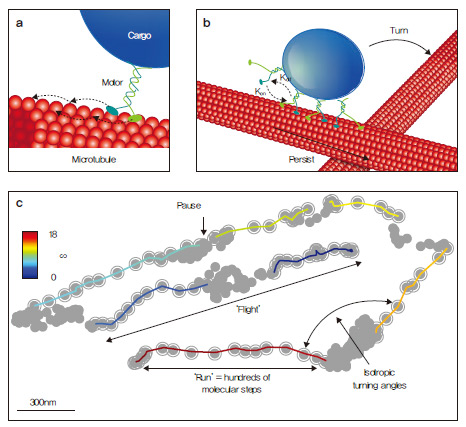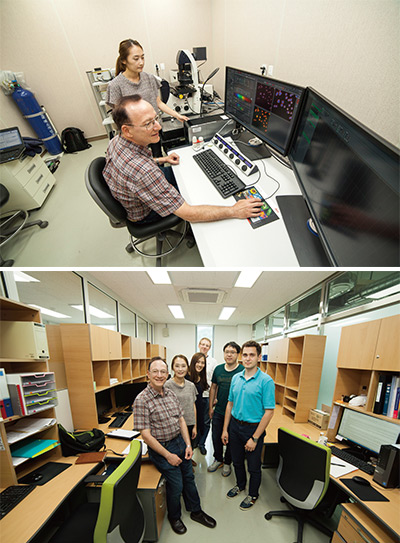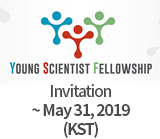Discovering new knowledge in daily
life through interdisciplinary research Director Steve Granick, Center for Soft and Living Matter
The IBS Center for Soft and Living Matter is at Ulsan National Institute of Science and Technology (UNIST), located north of the Taehwa River crossing Ulsan. The director of this Center is Steve Granick, one of the world’s greatest scholars in polymer physics
and chemistry. We interviewed the master
of convergence, who emphasizes the
value of collaboration among people from
different backgrounds to make exciting new
discoveries.
“There are many people who deserve this. I
was one of the lucky people. It is especially
good for people who work with me because
it will open new possibilities for them. It also
becomes the responsibility for us here at IBS to
do even better work here in Korea,” said Steve
Granick, Director of the IBS Center for Soft
and Living Matter, telling us he received many
calls congratulating him on his election to NAS
in late April. Director Granick is a distinguished
professor at UNIST and founded the IBS
Center for Soft and Living Matter in 2014.
We met him at the UNIST campus where the
Center is located to hear about the Center’s
recent achievements and future plans.
Steve Granick worked with John Ferry, the
greatest scholar in polymer physics and
chemistry at the time, during his doctoral
program, and with Pierre-Gilles de Gennes
(the Nobel Prize laureate in physics in 1991) as a
postdoctoral researcher. Granick had been a
professor at the University of Illinois for 30
years. Interestingly enough, he received both the
Polymer Physics Prize awarded by the American
Physical Society and the National Award in
Colloid and Surface Chemistry awarded by the
American Chemical Society. He is regarded as
a world-class scholar in polymer physics and
chemistry.
Physicist-chemist emphasizing
convergence

Talking about the awards, Director Granick
said, “It is not common to get these awards, one
in physics and one in chemistry. But that is the
interdisciplinary work that we specialize in. We
are curious about the whole world. If you open
your eyes, you don’t see a separation between
different disciplines, so it makes sense to work
in different fields.” He studied sociology as an
undergraduate, but changed his research field to
chemistry as he thought that the way to do science
is rather defined. When he became a professor,
he started working in many different fields. He
believes that he would have had to say no to too
many problems that could be interesting if he had
wanted to just work on one thing.
This philosophy is also reflected in the direction
of his Center, for it conducts research on not a
single particular field but various fields related
to our daily lives. In fact, soft matter is about
the physics of daily life, about discovering the
underlying simplicities in daily life, complex
though it is.
When Director Granick was asked to explain
his research field, he said, “To me it is whatever
is interesting. If something is interesting, we should study it.” He added, “It occurred to
me that in the 21st century we should study
not only inanimate matter (soft matter such as
polymer, water, etc.) but also life. I do not want to
compete with biologists, but still, we should try
to make a bridge between natural science and
biological science.” For instance, juice is a liquid
with floating matter. In order to study how to
thoroughly mix the solute and solvent of the
juice, polymer science and colloid science should
be related. “It is daily life,” Director Granick
added. “We want to understand the world we
see around us. There are so many things in this
world that no one understands very well. We
want to contribute to the world by attempting
to improve this understanding. We don’t have a
rigid program; rather we are following discovery
type of research. But we know from experience
that when scientists understand daily life better,
there are technologies that can be improved as a
consequence.”
Director Granick has placed a special emphasis
on research that transcends the scope of a
single discipline. His Center also takes a highly
interdisciplinary approach. “To understand
it completely, we have to use all disciplines,”
he said. He tries to avoid questions that many
others have already worked on. He believes that
it is important to choose unexplored problems
where his research can make a difference. In
other words, he does interdisciplinary research
because he can find new things and thus
improve the world.
The Center regards recruitment of talented
people as the most important necessity for
interdisciplinary research. Director Granick
said he works very hard to find senior scientists
and group leaders who are smarter than he
and also have different backgrounds and the
personality to talk to each other. He believes
that when smart people who know different
things have debates and explain their ideas, they
will formulate new and interesting questions.
“I think the best recipe to be creative is don’t
tell people what to do. Just find good people
and let them figure out what they should do.
This is what very special about IBS.” He also
said, “Korea invests in long-term questions,
not just short-term, engineering solutions.
And the country is very wise in having such a
big ambition these days especially when other
countries are becoming less ambitious.”
The National Academy of Sciences (NAS)
is one of the most authoritative and
prestigious academic organizations in
the world. Many Nobel Prize laureates,
including Einstein and Watson and
Crick – who discovered the structure
of DNA – were NAS members. Election
to the organization is akin to gaining
international credibility for one’s academic
achievements and is considered one of
the highest honors a scientist can receive.
Molecules in a cell have intelligence?

a. Trajectories of endosomes in
live cells. Cargo is transported
along microtubules dragged by
molecular motors.
b. Microtubules extend in
multiple directions and cross
paths to form networks. Multiple
motors can change transport
directionality by binding
simultaneously to work as a
team.
c. A representative trajectory
with runs, turns and flights.
© Kejia Chen et al. / Nature
Materials
The Center recently released an interesting
finding on the movement of matter in cells. To
be specific, it found a movement pattern called
“Lévy walk,” through which molecular matter,
which lacks intelligence, efficiently searches
and moves toward a destination as if having
intelligence. This finding was published on
Nature Materials on March 30th.
Scientists have long studied how a cell moves
matter to a target destination. This is like
knowing how a mail carrier delivers mail to a
destination. Research in the past concentrated
on how the delivery vehicle operated, while
little research was conducted to understand the
road map through which the mail reached the
desired destination. The Center grew interested
in the delicate mechanism by which matter in a cell could be delivered to its final destination.
The Lévy walk is a term coined after the
French mathematician Paul Lévy. When finding
food, animals such as honey bees, jelly fish,
sharks, or human beings move within a region
changing directions irregularly and frequently
but sometimes going a long distance. Such
random behavior patterns or phenomena are
called Lévy walk. This research is significant in
that the Lévy walk is found in movements of
molecular matter that does not have intelligence
or memory while the premise of the pattern
revealed thus far was the intelligence of animals.
The Center paid attention to the movements
of molecular motors that transport matter in a
cell. Molecular motors are proteins that control
the various operations (cell division, intracellular
transport, cell movement, etc.) required to maintain
the function of a cell. They deliver matter like
ions, sugar, and amino acids to a particular
place through microtubules stretched like a
road network within a cell. Microtubules, a
kind of protein fiber in the shape of a hollow
cylinder, keep the cytoskeleton consistent and
are involved in cell migration.
Researchers at the Center observed the
movements of the “cargo,” endosomes in a
living cell, dragged by molecular motors and
found that the motors showed a pattern in
which they would randomly and cautiously look
around but occasionally move a long distance.
It was found that this Lévy walk was caused by
a tendency in the direction of movement. In
other words, the direction frequently changes
when searching and moving within a close area
while there is a tendency to keep moving toward
a goal if the goal is in a remote place.
Talking about the functional advantages of the
Lévy walk, Director Granick said, “I was surprised
and charmed to learn that molecular motors
don’t have to run on gasoline or electricity.”
The Lévy walk is a far more efficient way for
cells to find places they need to go as it allows
the quick and random searching until cells
find the right place than could be done by the
slower Brownian motion. He explains how the
Lévy walk is different from Brownian motion:
Brownian motion is like when you put some
milk very carefully into coffee and don’t stir it.
You will see the milk mix very slowly. If we stir,
it mixes much faster. That is the Lévy walk and
it is one way that nature has discovered to stir
the contents of our cells.
The “Lévy walk” research was supported by the
Department of Energy (DOE) and it is also the
result of collaborative work with researchers of
the University of Illinois. The research began in
an interesting way. Director Granick said, “I did
not work on cells until I met an excellent Illinois
university student, Bo Wang (2nd author) who is
now a Stanford University professor with his
own laboratory. To find a way to interest him so
he would work with me, we began looking inside
living cells. That led to the paper.” He said
the paper simply shows how interdisciplinary
research works. “Bo Wang worked very closely
with the first author, who is expert in statistics
and mathematical analysis modeling, to make
the final paper. It was imperative to have them work together. One discipline could not have
done it.”
Fresh stimulation to the scientific
community in Korea

Researchers from around the
world are working at the Center
for Soft and Living Matter.
Director Granick hopes that
talented people with various backgrounds will join the Center
The Center expects to continue interdisciplinary
research as scientists with various backgrounds
continue joining. According to Director
Granick, Professor Amblard from a renowned
lab in Paris, theoretical physicist Dr. Tlusty
from the Princeton Institute of Advanced
Study in the U.S., Dr. Grzybowski from
Northwestern University in the U.S., and
Professor Yoonkyoung Cho of UNIST have
newly joined the Center. Professor Amblard
majored in mathematics, biology, and physics;
Dr. Grzybowski majored in mathematics,
physics, chemistry, and biology; and Professor
Cho is a nanomedicine expert who has 10 years
of experience of DNA chip R&D at Samsung
Advanced Institute of Technology.
Director Granick said, “These smart people will
decide which direction our Center’s research
will go in the future,” and stressed, “It is not I
but we, our scientists who decide the direction.”
His Center will also work on biologically
inspired research. For example, blinking our
eyes is a way to lubricate our eyes. Water seems
so simple, but we depend on it in a way we do
not fully understand.
His Center is building state-of-the-art research
facilities such as imaging facilities and NMR.
Director Granick emphasizes that it is important
to use the technology of the 21st century and
bring it to Korea to advance research. He said
he used a number of research devices to see
everything that happens inside cells. Talking
about research methods using many research
devices, he said it took two years to find
florescent molecules that cells like to eat.
Director Granick said, “I love IBS’s ambition
to be different from what others are doing,
UNIST’s full support, IBS researchers’ creativity
and hard work, great research facilities, and
openness to welcome Westerners who still
do not speak Korean well.” He hopes that
his Center will promote more international
collaboration with Japan, India, and China as
well as U.S. and Europe. He has also previously
worked as a professor in China and France.
Talking about the ultimate goal of the Center,
Director Granick said, “No one person’s
achievements last very long. The only longevity
is students. Though one of my mentors won
the Nobel prize, I have noticed that people
forgot his name some time afterward. But he
continues to have influence through me and
his other students. I aspire to do so through my
researchers here at this Center.” He added, “If
we are successful, we will influence the agenda
of other scientists. Korean science shows to the
world that here is an important problem and we
need to work on it to improve the world.”
|


 s_thumb.jpg
s_thumb.jpg














